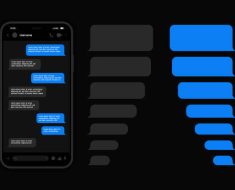
When using AI tools like ChatGPT or other language models, you might have noticed that sometimes the AI gives great answers, and other times it seems to lose track of the conversation. This has a lot to do with something called the “context window.”
But what exactly is a context window, and why does it matter?
In simple terms, a context window is the amount of information an AI can “remember” while generating a response.
The AI uses the context window to refer back to earlier parts of the conversation or text to provide a relevant answer. If the window is too small, the AI might forget what you were talking about earlier. The larger the window, the more information the AI can keep in mind while responding.
In this guide, we’ll break down what a context window is and how it affects the responses you get from AI.
What Is a Context Window in AI?
A context window in AI is simply the amount of information the AI can hold onto while it’s generating a response. Think of it like the memory the AI uses to keep track of a conversation or a task.
When you’re talking to an AI or using it to complete a task, the context window limits how much it can “remember” from what you’ve already said.
AI tools break down text into smaller parts called tokens. Tokens can be entire words or even parts of words. The context window is measured in these tokens.
So, if an AI model has a context window of 4,000 tokens, that means it can look back at 4,000 tokens worth of text to create a response. If the conversation or text goes beyond this limit, the AI starts to forget the oldest information and focuses on what’s within the window.
Understanding how a context window works helps you know why AI sometimes loses track of long conversations or provides incomplete answers when there’s too much information for it to handle at once.
How Does a Context Window Affect AI Response?
The size of the context window directly affects how well the AI responds to your input. The more information the AI can “remember,” the better it can understand what you’re asking and provide a relevant answer. When the context window is large, the AI can keep track of long conversations or complex tasks, making its responses more accurate and detailed.
However, if the context window is small, the AI can lose track of earlier parts of the conversation or text. For example, if you’re having a long chat with an AI and the conversation goes beyond its context window, the AI might forget key details from earlier. This can lead to responses that seem disconnected or irrelevant.
Larger context windows allow AI models to remember more information, making them better at handling long or detailed requests. Models with smaller context windows, on the other hand, may struggle with remembering important details, leading to less helpful responses.
How Large Is the Context Window in Popular AI Models?
The size of the context window varies between different AI models, and it plays a big role in how well the AI can handle complex or long conversations.
For example, GPT-3 has a context window of about 4,096 tokens, while GPT-4 comes with larger versions that have context windows of 8,192 tokens and even up to 32,768 tokens in its extended models.
To put that in perspective, 4,096 tokens can roughly hold about 3,000 words. That’s enough to keep track of a short essay or a decent-length conversation. But if you’re discussing something over many paragraphs, the AI might start forgetting earlier parts of the conversation as you reach that limit. GPT-4’s larger windows, especially the 32k token version, can handle more detailed conversations or tasks, like analyzing entire books or long research papers without losing context.
So, a larger context window allows AI to “remember” more, making it better for more detailed or complex requests.
Examples of AI Limitations with Small Context Windows
When an AI model has a small context window, it can easily lose track of earlier information in a conversation or text. This can lead to responses that are off-topic or incomplete.
For example, if you’re discussing a detailed subject over several paragraphs, and the conversation exceeds the context window, the AI might “forget” key points from the beginning of the conversation.
Let’s say you start by giving the AI a detailed description of a book, then ask it to summarize each chapter.
If the context window is too small, by the time you get to the later chapters, the AI may not remember the details of the first few chapters and might give you an inaccurate summary.
Another common issue is with long research papers. If the text goes beyond the AI’s memory limit, it might overlook important sections, resulting in a response that misses critical points. This happens because the AI can only focus on the information currently within its context window.
How AI Models Handle Large Context Windows
When AI models have larger context windows, they can remember and use more information at once. This improves the quality of their responses, especially for long or complex tasks. Here are seven ways AI benefits from larger context windows:
- Better Memory Retention
A larger context window allows AI to “remember” more details from earlier in the conversation. This means the AI can provide more consistent and accurate answers without losing important context. - Improved Accuracy in Long Conversations
With a larger window, the AI can keep track of longer conversations without forgetting key points. For example, in a discussion that spans several topics, the AI will still be able to refer back to earlier parts of the conversation, giving more accurate and relevant answers. - Handling Complex Tasks
Larger context windows make AI models better suited for tasks like analyzing long research papers or summarizing entire books. The AI can keep all parts of the text in mind, leading to more detailed and insightful responses. - Maintaining Coherence
When an AI can reference more information, its responses are smoother and more coherent. This helps when the conversation involves multiple steps or detailed questions that require the AI to recall earlier information. - Reducing Errors
In smaller context windows, AI can forget important details, leading to off-topic or incorrect responses. With a larger window, these kinds of mistakes are reduced because the AI has more information to work with at all times. - Supporting Long-Form Content
AI models with large context windows are better at generating or reviewing long-form content like essays, reports, or scripts. The AI can hold onto more of the text, making it easier to edit or continue writing from where it left off. - More Effective Summarization
When summarizing large documents or multiple sources, a bigger context window allows the AI to process and summarize more effectively. This means fewer important details are left out of the summary, making it more complete and accurate.
How to Optimize Prompts Based on Context Window Size
When interacting with AI, the way you structure your prompts can make a big difference, especially depending on the context window size of the AI model you’re using. Here are some tips for optimizing your prompts to get the best responses:
For Smaller Context Windows:
If you’re using an AI model with a smaller context window (like GPT-3’s 4,096 tokens), it’s best to keep your prompts short and to the point. Focus on the most important information and avoid giving too much detail at once. Breaking your conversation or request into smaller parts helps the AI provide better responses without losing context.
For Larger Context Windows:
When using models with larger context windows (like GPT-4’s 32,768 tokens), you can afford to include more detail in your prompts. This is especially useful for complex questions or tasks that require the AI to keep track of multiple pieces of information. With a larger context window, the AI can handle longer conversations or documents without forgetting earlier points.
Be Clear and Specific:
Regardless of the context window size, always aim to be clear and specific in your prompts. If the AI has more room to remember details, give it clear instructions on what you want it to do, whether it’s summarizing a document, answering a detailed question, or generating content.
Break Down Large Tasks:
For smaller context windows, break larger tasks into smaller chunks. Instead of asking the AI to summarize an entire research paper at once, ask it to summarize each section separately. This helps the AI stay within its memory limits and provide more accurate responses.
Take Advantage of Larger Windows:
With larger context windows, you can ask the AI to handle bigger tasks in one go, such as summarizing a long article or analyzing multiple chapters of a book. Use this extra memory to get more detailed and complete responses.
By understanding the size of the context window, you can adjust how you interact with AI, making sure you get the most accurate and useful results.
The Future of AI Context Windows
As AI continues to evolve, context windows are expected to grow larger, allowing AI models to handle even more complex tasks and conversations. Larger context windows mean that AI can “remember” more, process longer documents, and provide more accurate responses over extended interactions.
In the future, we might see AI models capable of keeping track of entire books, research papers, or long-term conversations without losing any detail. This would make AI even more useful for tasks like legal research, medical analysis, or long-form content generation.
Researchers are already working on improving how AI handles and processes large amounts of information. Expanding context windows will make AI models smarter, more reliable, and able to work on more sophisticated projects with less human intervention. This will change how we use AI in education, business, and creative fields.
Conclusion: The Future of AI Context Windows
As AI continues to improve, the size of context windows will play an even bigger role in how useful these tools become.
Larger context windows will allow AI to remember more details over longer periods, making them better at handling complex tasks like analyzing long documents, maintaining context in extended conversations, and assisting with in-depth research.
In the near future, we can expect AI models to handle even larger volumes of information, making them more efficient at providing accurate, detailed responses without losing track of key points. This will open up new possibilities for AI in fields like education, research, legal work, and content creation. As context windows expand, AI will continue to grow as a valuable tool for students, professionals, and researchers alike.
Understanding the importance of context windows today will help you make the most of AI tools now and in the future.





